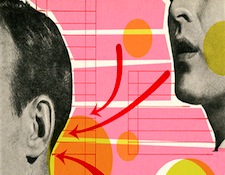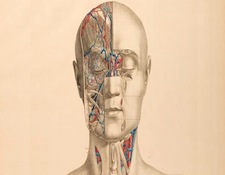It’s the time of year for saving money!
I read a science fiction novel some years ago that I would like to use in introducing this article. Unfortunately, while I remember that it was called “The (something) Girl”; that Larry Niven wrote favorably about it in its liner notes; and that the cover of the paperback version was mostly dark blue or purple, I can’t, for the life of me, remember what that missing word in the title was, or who wrote it.
 In it (whatever it was called), a rich, brilliant, geeky and, probably for excellent reason, unloved young man builds a fully articulated, absolutely believable-looking and complete in every detail, feature, and texture, female humanoid robot to be his lover.
In it (whatever it was called), a rich, brilliant, geeky and, probably for excellent reason, unloved young man builds a fully articulated, absolutely believable-looking and complete in every detail, feature, and texture, female humanoid robot to be his lover.
Key to its perfect operation and the fulfillment of his dreams, it (henceforth “she”) is equipped with the equivalent of a fully human sensorium, with all five of the normally-listed senses, including touch, plus all of the little lesser senses and awarenesses (temperature, pressure, proximity, and so on) that make human beings what and who they are. These things are all packed into a beautiful “body” with a genuinely far-advanced electronic brain and an Artificial Intelligence fully capable of passing any Turing Test ever devised.
There’s a problem, though: If I remember correctly, the first time she’s turned on and allowed to view the world, she blows-up. Or maybe blows-OUT would be a better word. Whichever it is, what happens is that, with all of the thousands and thousands of sensors of every kind built into her body (just as many as in a real human being) and with no prior experience to enable her to determine which of the myriad bits of information, all coming at her at the same time, are of greater importance and which are of less, she tries to accept and deal with all of them as if they are of equal priority and simply overloads, falls down, and requires extensive repair work – including a whole series of pre-programmed filters and screening/prioritizing programs – before she can try again.
The fact of it is that – as is one of the themes of the story – it’s not the having of vast amounts of information available to us that makes us human, but how we LIMIT that information, catalog it, prioritize it, and select some portion of it to be part of our ongoing life experience, while on some other, unconscious level, abandoning or disregarding the rest of it as irrelevant and inconsequential.
If you think I’m kidding or wrong, think about this: At this very moment, you are probably in a room; probably wearing some items of clothing; and probably sitting or lying down to read this. Were you – before I now mention it – aware of the temperature of the room? Of the feel of your clothing on the various parts of your skin that it touches? Of the different feel of the air on your skin, where there is no clothing to cover you? Were you conscious of the feel of your butt on the chair or couch that you’re sitting in? Or the feel of your whole body on whatever you’re lying down on? Were you noticing the music, TV set, or radio playing in the background? Or the people talking? Or, if that was the case, the silence? According to experts at Purdue University and elsewhere, the average ambient noise level in a quiet suburb is 50 dB A; did you notice it, or were you too busy reading?
 The fact of it is that we are filtering everything – every single bit of information, every sound; every sight; every feeling of touch, temperature, or pressure – all the time; and for exactly the same reason that “The ________ Girl” needed reprogramming: Because there’s VASTLY TOO MUCH OF IT COMING AT US ALL THE TIME, AND WE, TOO, MIGHT OVERLOAD IF WE HAD TO PROCESS IT ALL.
The fact of it is that we are filtering everything – every single bit of information, every sound; every sight; every feeling of touch, temperature, or pressure – all the time; and for exactly the same reason that “The ________ Girl” needed reprogramming: Because there’s VASTLY TOO MUCH OF IT COMING AT US ALL THE TIME, AND WE, TOO, MIGHT OVERLOAD IF WE HAD TO PROCESS IT ALL.
Consider, first, the example of sight: With only the rarest of all possible exceptions, we practically NEVER look at just one thing. Everything has a background; every background has other things in it; and every single one of those other things has a shape and a size and a color and a spatial relationship to every other thing and to the thing that we want to look at. To a very substantial degree, because our eyes can be focused, we can narrow our field of vision to concentrate on what we want to see, but it’s not possible, just by changing the direction we look, the dilation of our pupils, and the focal length of our eyes’ internal lenses, to physically focus so tightly as to eliminate everything that we don’t want or need to see. And yet, because a very significant portion of what our eyes pick up is irrelevant, distracting, or simply of no interest to us, our brain filters-out all of what we don’t want to see, and leaves (to a very substantial degree) only what we do. It’s necessary. Otherwise, we’d never be able to do such things as driving a car or reading this article.
]]>The same thing also applies to what we hear (Aha! He’s finally getting around to the subject of Hi-Fi!), and the process is fully as complicated but because, unlike our eyes, our ears have (even though some people can wiggle them) effectively NO means of focus, it’s ALL done by our brain.
 That’s, of course, why we can still have a conversation in a noisy restaurant or a mother can hear her child crying over virtually ANY kind or level of ambient noise. It may also be why “blind” or “double-blind” testing of cables (See? You KNEW it was coming!), amplifiers, and all of the other audio “tweaks” that audiophiles love and flat-earthers love to hate doesn’t work.
That’s, of course, why we can still have a conversation in a noisy restaurant or a mother can hear her child crying over virtually ANY kind or level of ambient noise. It may also be why “blind” or “double-blind” testing of cables (See? You KNEW it was coming!), amplifiers, and all of the other audio “tweaks” that audiophiles love and flat-earthers love to hate doesn’t work.
It’s NOT because the test doesn’t work, but because people hear what’s interesting or important to them and either give everything else a lower priority or simply filter it out of conscious perception. And, because everybody’s idea of what’s interesting or important, and in what hierarchical order, is different from everybody else’s, no two people consistently get the same results because no two people are ever effectively listening to the same thing!
As audiophiles, we all have different perspectives and different goals for our listening. For some, the thing of interest is the music and the purpose of the sound is, to a greater or lesser degree depending on the particular listener, only to make the music available to be enjoyed. For others, it’s all about the sound – and not just the overall sonic presentation but, for most people, some specific aspect of the sound or some group of aspects in some order of preference. That’s why some people listen for (and primarily to) the “beat” and others listen for clarity, or tonal balance, or dynamics, or transient attack and decay, or (like me) imaging, soundstaging, and ambience retrieval. It may also explain why women almost always know the words of a song better than men do and are much less likely to become audiophiles: The words are what the ladies listen for, and everything else is of less interest and is ignored or filtered-out.
Hearing is NOT about the pressure waves that impinge on our eardrums, but about the information that those pressure waves contain and transmit. Even though Hi-Fi manufacturers are constantly striving to make more and more information available to us, in ever better and purer form, what part of that information we will actually perceive is determined by our mind and by our own personal psychological bent. Hence the whole field of “psychoacoustics”, where it’s not the acoustics, but the psyche that is dominant. As Harry Nilsson said so many years ago in his album, The Point, “You see what you want to see and you hear what you want to hear”. Everything else passes by unnoticed and may, unless something happens to dredge it up from your subconscious, be lost forever.
Do you think that could be what happened to the name of that book?





